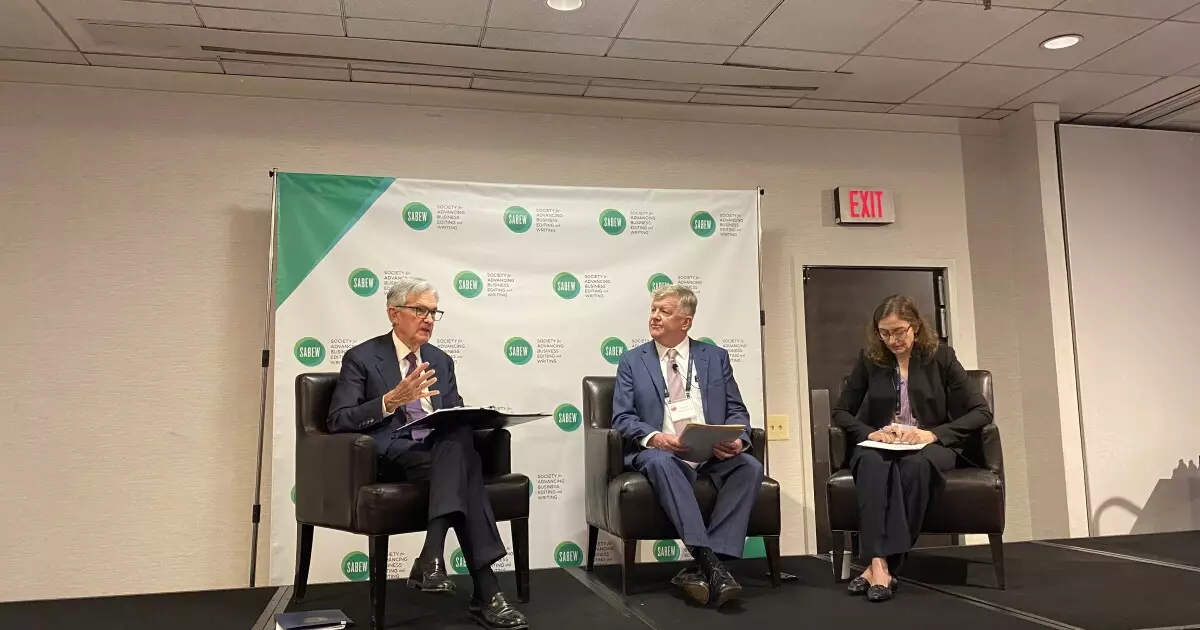As we venture deeper into the post-pandemic economic recovery, the influence of government policies on both the macro and microeconomic scales becomes ever more apparent. The U.S. economy, once thought to be on a healthy trajectory, now faces significant uncertainty largely due to the current administration’s aggressive stance on tariffs and immigration. The Federal Reserve, operating under the astute leadership of Jerome Powell, finds itself in a precarious position—one of cautious observation rather than decisive action. This “wait-and-see” approach may appear prudent, but it invites a realm of consequences that merit deeper examination.
Moreover, it is critical to recognize the psychological implications of government policy. The American consumer, particularly one with unlimited access to credit, often continues to spend despite rising prices and ambiguous economic forecasts. This behavior, while commendable in its optimism, is inherently risky. Not only does it reflect a disconnect from the harsh realities of inflation, but it also risks bolstering a façade of economic stability that may crumble under the weight of unforeseen tariff repercussions.
The Tariff Tensions Unveiled
The recent tariff introductions are far more than mere fiscal adjustments; they are a potential catalyst for economic strife, especially when one considers their multifaceted implications. Powell’s acknowledgment of the tariffs exceeding economic forecasts is alarming. Such an aggressive approach can upend industries, drive prices higher, and stifle consumer spending. As businesses grapple with increased costs of production, the burden will inevitably be passed to consumers, resulting in inflated prices on everyday goods.
Moreover, the question of how these tariffs will reshape American trade relations and economic stability looms large. Proponents of tariffs argue that they safeguard local jobs and industries, yet this perspective is naïve. History teaches us that trade wars rarely result in lasting victories. Instead, they often yield a cycle of retaliatory measures that can spiral out of control, hurting both domestic consumers and producers. The decision-makers must wonder: is protecting a few jobs worth the risk of decimating entire sectors of the economy?
Delving into Consumer Sentiment
Consumer mood, as highlighted by Powell, plays a pivotal role in fueling economic activity. Despite a lingering belief in economic resilience, households remain under pressure due to persistently high prices. Consumers are seemingly willing to maintain their spending habits in the face of adversity. While one could admire this spirit, it serves as a troubling indicator; it reflects an unsettling normalization of inflated expenses.
The notion that prices only go up—a sentiment echoed by Powell—is detrimental to the broader economic landscape. Increased spending does not equate to a healthy economy when it is driven by a reluctance to cut back due to fear or denial. The dichotomy of robust spending amid rising prices is reminiscent of the 1970s, a period beset by stagflation. Although Powell dismisses comparisons to that era, his assurance may be misplaced. An encouraging labor market and lower inflation indicators, while positive, do not eliminate the lurking shadows of deeper economic malaise.
Evaluating the Federal Reserve’s Dilemma
Jerome Powell’s tenure as the Federal Reserve Chair has been marked by deliberation in an environment rife with unprecedented challenges. His commitment to approaching monetary policy with caution may seem rational, yet it raises questions about the potential long-term ramifications of inaction. When is indecision merely a guise for lacking a clear vision or ideology?
One might argue that a more proactive stance could have mitigated risks before they became pervasive. By simply standing idly by while the administration’s policies unfold, the Federal Reserve risks losing its status as a stabilizing force, ceding ground in a volatile economic landscape. If Powell’s Federal Reserve continues down this path of observation rather than action, we may find ourselves grappling with a financial crisis that could be avoided.
Political Neutrality in Question
Powell’s assertion of nonpartisanship is commendable, yet it’s vital to probe the implications of such claims in a politically charged atmosphere. The separation of politics from economic policymaking is a noble ideal, but in practice, it can be tenuous. The public’s perception of the Federal Reserve as a non-political entity is fragile and susceptible to the influences of political tides.
In an era where political ideologies frequently infiltrate economic discourse, it is necessary for Powell and his colleagues to tread carefully. The intrinsic links between policymaking and political outcomes mean that any misstep can lead to a significant erosion of public trust. The Federal Reserve must strive to maintain its autonomy while also being vigilant about the realities of the government machinery impacting the economic landscape.
Navigating the complexities of today’s economic environment requires vigilance, insight, and, above all, a willingness to confront uncomfortable truths. As economic policy unfolds, the potential fallout from tariffs and immigration shifts looms large, demanding careful consideration and strategic foresight.

